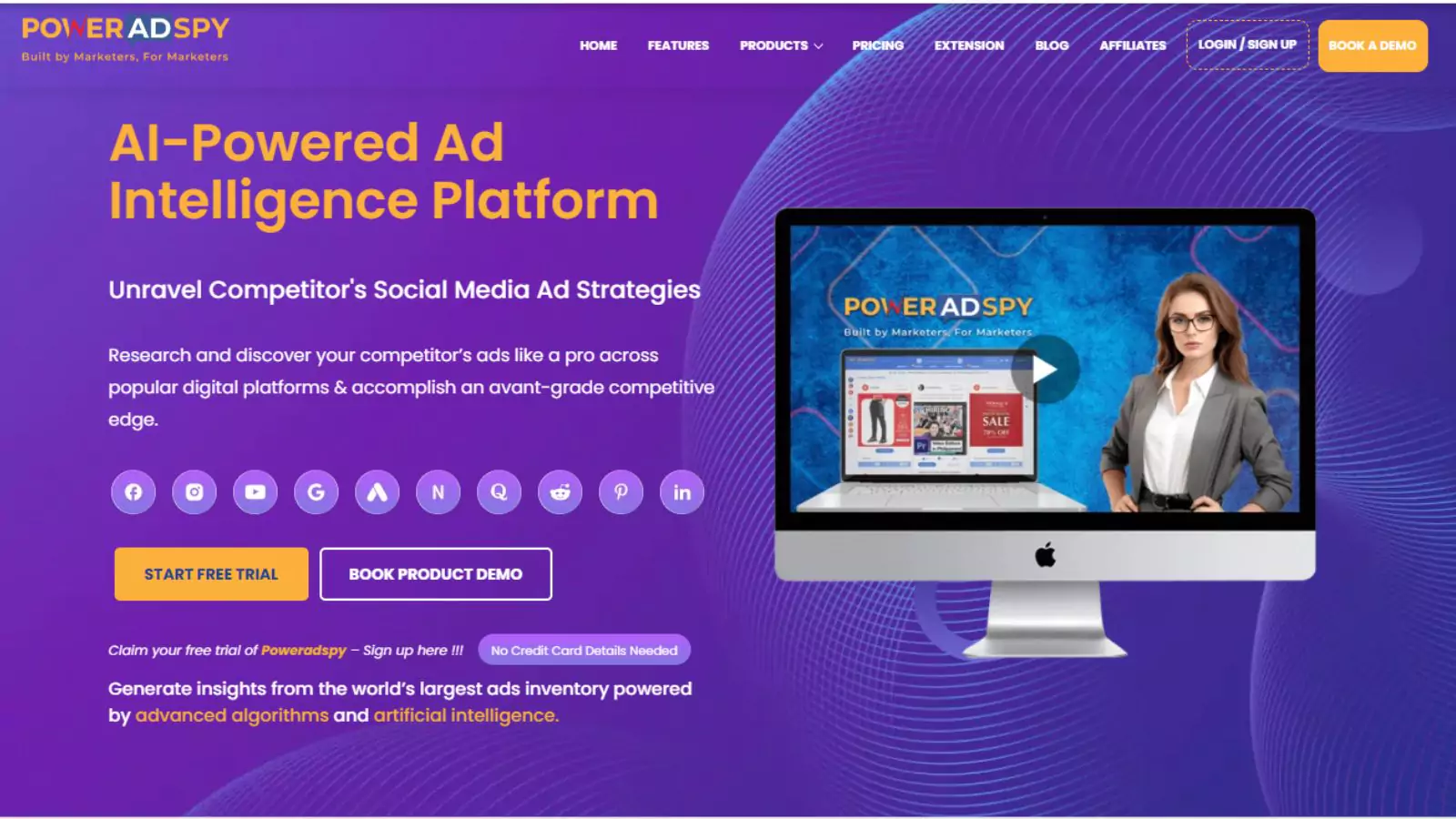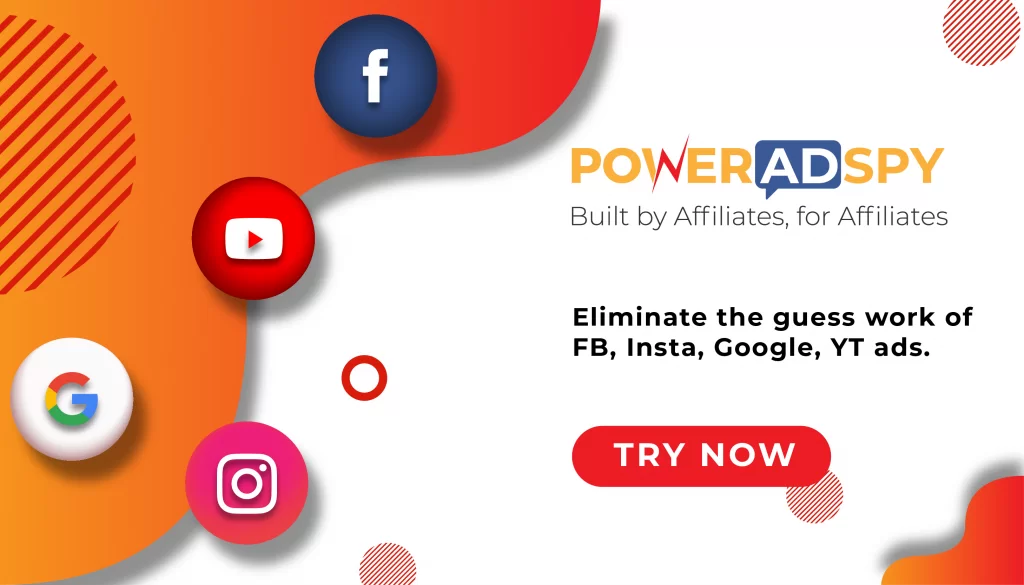How Does Facebook Ad Algorithm Work? 5+ Tips To Optimize
Facebook has been an advertising powerhouse for a long time, enabling businesses to reach billions of potential customers with precision and efficiency. Central to this capability is the Facebook ad algorithm, a sophisticated system that determines which ads are shown to which users.
As you know, Facebook’s algorithm looks at lots of data, like how users act and how ads perform, to show the right ads to the right people at the best times. Many brands face challenges with their ads—like them not doing as well or not showing up often in users’ feeds. Understanding this algorithm is crucial for any marketer looking to maximize ad spend and achieve the best possible return on investment.
In this blog, we will delve into the intricacies of the Facebook advertisement algorithm, exploring how it works, what factors influence it, and how you can leverage this knowledge to enhance your advertising strategy.
In a hurry? Listen to the blog instead!
What Is Facebook Ad Algorithm?
The Facebook advertising algorithm refers to the complex system that Facebook uses to determine which ads users watch on the platform. Through machine learning, this algorithm analyzes a vast array of data to deliver ads that are most likely to resonate with individual users.
Key factors considered by the algorithm include user behavior, preferences, interests, demographics, and ad performance metrics. The goal of the Facebook algorithm for ads is to maximize engagement and satisfaction for both users and advertisers by ensuring that ads are relevant and timely for the targeted audience.
However, understanding the Facebook algorithm changes helps you strategize your marketing game and elevates your presence. Tools like PowerAdSpy can further enhance your ad strategy by providing insights into top-performing ads and helping you track competitor campaigns effectively.
What Are The Key Factors For A Successful Facebook Ad Post?
Here are the factors that determine the success of your posts
-
Commenting on Facebook
If your Facebook posts do not get comments, your engagement may decrease. Create content that encourages comments by asking questions or discussing trending topics.
More people will see engaging posts as their friends and acquaintances comment on them, ultimately affecting the Facebook ad algorithm. Replies to comments are crucial as they show that your content has sparked a conversation, creating a chain reaction of engagement.
-
Reactions on Facebook
While not as impactful as comments, reactions still affect post visibility. Likes provide a small boost, but other reactions like love, haha, wow, or anger give a better boost because Facebook’s algorithm favors them. That’s why having varied reactions to your posts could help you in enhancing engagement.
-
Sharing on Facebook Messenger
When your post is shared through Facebook Messenger, it’s considered a meaningful interaction. If someone shares your post, it indicates that the content is engaging, which the algorithm takes into account for better visibility.
-
Sharing Your Post
When people share your post on their wall, it reaches their friends and followers. The real benefit comes when shared posts receive comments and reactions, enhancing their visibility in the Facebook ad algorithm and boosting your content’s reach. Encourage sharing and interaction on shared posts to maximize visibility and engagement.
-
Other Factors that Influence Your Post
- Time Spent Viewing Content: Longer viewing times increase the reach of your post as the algorithm sees it as more engaging.
- Time of Posting: Posting when more people are online increases the chances of your content being seen and engaged.
- Type of Post: The format of your post (text, picture, video) can affect engagement levels.
- Facebook Page Profile: A complete and detailed Facebook page appears more legitimate, leading to greater trust and more sharing of your content. Fill out all information to enhance your page’s credibility.
- How Informative the Post Is: Informative posts, such as news or gossip, generally receive more engagement. Even if you’re advertising a product or brand, include some new, valuable information to boost engagement. Informative content tends to attract more attention and interaction.
Facebook Ad Algorithm Evolution (2020-2023)
Facebook has continuously updated its ad algorithm in recent years to improve how ads are delivered, targeted, and perceived by users. Here’s a breakdown of the core updates from 2020 to 2023:
2020: Personalized Advertising
Facebook began emphasizing personalized ads to enhance user engagement. Facebook Ads now appear in users’ feeds based on previous interactions, such as clicks or likes. Users also gained more control over the ads they see, with options to manage preferences and hide ads they find irrelevant.
2021: Integration of Machine Learning
Recognizing the challenge of personalizing ads for billions of users, Facebook integrated machine learning into its feed algorithm. This update aimed to predict user preferences based on interactions, followers, and interests, filtering out less relevant ads.
2022: Advancements in AI
Facebook enhanced user control by introducing advanced AI features that optimize the Facebook ad algorithm. Users gained the ability to adjust their feed preferences with options like “Show More” or “Show Less,” influencing the visibility of similar content. This update underscored Facebook’s commitment to user-centric ad delivery and personalization.
2023: State of Facebook’s Ad Algorithm
Facebook’s ad algorithm follows a user-centric, AI-powered model that prioritizes relevance. It evaluates ads based on four main factors:
Inventory: Analyzing potential ads based on a user’s past activities and engagements.
Signals: Assessing ad relevance using diverse indicators such as publisher credibility and posting time.
Predictions: Anticipate user behavior by understanding interests and preferences, such as targeting gardening enthusiasts with relevant ads.
Relevancy Scoring: Assigning scores to ads based on their likelihood of engaging users. Higher scores result in better placement in users’ feeds.
These updates reflect Facebook’s commitment to improving user experience, enhancing ad targeting capabilities, and adapting to industry changes. Staying informed about these developments is crucial for advertisers to optimize their strategies and comply with Facebook’s ad guidelines.
How Does Facebook Ad Algorithm Work?
Here is how the Facebook algorithm works:
Ad Auction
Every time a user opens Facebook or Instagram, Facebook conducts a rapid auction to decide which ads to display. This Facebook ad auction algorithm considers factors like the advertiser’s bid (how much they’re willing to pay for user actions like clicks), the ad’s quality, and relevance to the user.
Bid and Budget
Advertisers set their bids and overall budgets for their ad campaigns. Bids determine how competitive an ad is in the auction, while budgets control how much advertisers spend over time.
Audience Targeting
Advertisers specify who they want to reach with their ads based on demographics (like age and gender), interests, behaviors (like past purchases or online activity), and other criteria. Facebook uses this information to match ads with users who are most likely to be interested.
Relevance Score
Facebook assigns a Relevance Score to each ad based on factors like engagement history and user feedback, predicting how well the ad will resonate with its target audience in the Facebook ad algorithm. Ads with higher relevance scores are more likely to be shown.
Ad Rank
To determine which ad wins the auction, Facebook calculates an Ad Rank for each ad. Ad Rank combines the bid, the ad’s Relevance Score, and the estimated likelihood that users will take action on the ad (such as clicking or making a purchase).
Ad Selection
The ad with the highest Ad Rank wins the auction and gets displayed to the user. It ensures that users see ads that are relevant and likely to engage them.
Ad Delivery
Facebook shows winning ads to the user in their Facebook or Instagram feed after selecting.
User Interaction
Facebook ad algorithm monitors how users interact with ads. Positive interactions, like clicking and ad liking, signal to the algorithm that the ad is relevant and engaging for users.
Optimization
Facebook’s algorithm learns from user interactions and optimizes ad delivery. It adjusts which ads are shown to users to maximize engagement and achieve the advertiser’s goals, such as increasing sales or brand awareness.
Reporting and Analysis
Advertisers can track the performance of their ads using tools like FB Ads Manager, which provides metrics such as impressions, clicks, conversions, and costs. This data helps advertisers understand what works and refine their strategies for better results.
Additionally, ad spy tools like PowerAdSpy can offer inspiration for creating more engaging ads by showcasing successful ad examples from competitors. By analyzing these insights, advertisers can develop compelling campaigns that resonate with their target audience.
By understanding these aspects of the Facebook Ad algorithm, advertisers can effectively leverage the platform to reach their target audience, maximize engagement, and achieve their marketing objectives.
PowerAdSpy- Advanced Ad Intelligence Tool
PowerAdSpy is a cutting-edge tool tailored for marketers seeking a competitive edge in digital advertising, particularly on Facebook. It is a robust platform designed to provide deep insights into competitors’ Facebook ad strategies, offering detailed analytics and strategic intelligence to enhance ad performance and campaign efficacy.
Ad Search Filters
PowerAdSpy offers extensive search filters that let you find ads using specific keywords, look up ads from particular brands or advertisers, and filter ads by format such as images, videos, or carousels. You can also search based on engagement metrics like likes, comments, and shares, and filter by specific call-to-action buttons used in ads.
Ad Analytics
With PowerAdSpy, you can analyze detailed performance metrics for each ad, including likes, shares, comments, and overall engagement. These are all crucial for understanding how well ads perform within the Facebook ad algorithm. You can also discover where ads are displayed, like in the newsfeed or sidebar, and monitor their duration, providing insights into ad effectiveness over time.
Competitor Analysis
This Facebook ad spy tool feature lets you monitor specific competitors’ ad strategies, providing insights into what works for them. By viewing successful ads from competitors, you can get creative ideas and inspiration for your ad campaigns.
Ad Bookmarking
You can save interesting ads for later reference using the favorites feature and organize saved ads into folders for easy access. It makes it simple to compare and review different ads when planning your campaigns.
Geo-Targeting
PowerAdSpy allows you to filter ads based on their target location, giving you insights into regional ad performance. You can see which ads perform well in specific regions, helping you tailor your ad strategies to different geographic areas.
PowerAdSpy is a comprehensive tool for advertisers looking to gain a competitive edge on Facebook. Its robust features make it an essential resource for optimizing ad campaigns and staying ahead in the digital marketing landscape.
Read More
Facebook Algorithm Changes: Is It The End For Facebook Advertising?
Facebook Ad Guidelines and Policies: Everything You Need To Know
Everything You Need To Know About Facebook Algorithm In 2022!
How To Optimize The Facebook Ad Algorithm?
The best way to get great results from your Facebook ad campaigns is to let the algorithm do its job. Here is what you need to provide for the Facebook ad algorithm to work effectively:
-
Define Your Objective Clearly
The Facebook algorithm needs to know what you want to achieve. Set a clear objective for your campaign. It tells the algorithm what action you want it to optimize for. If you aim for purchases, Facebook will focus on getting you sales. If you aim for clicks, you will get clicks, but not necessarily sales. Choose the most essential action for your campaign and ensure Facebook knows this.
Also, pick the appropriate timeframe for data optimization. Facebook ad algorithm uses a rolling window of data to learn from. We typically recommend using a 7-day window, but if you have a lot of data, you might want to use a 24-hour window for faster learning.
-
Target a Broad Audience
Instead of creating many small audiences, target a large audience. The more data the algorithm has, the better it can predict performance. Providing the algorithm with more data helps optimize your campaign more effectively and maintain good performance over a prolonged period.
-
Ensure Sufficient Daily Actions
The algorithm needs at least ten daily actions to learn and optimize efficiently. If you are not getting enough actions (like purchases), the delivery of your ad will decline. If this happens, try optimizing for a more frequent action, like adding items to the cart, to give the algorithm enough working data.
-
Set a Competitive Bid Price
A higher bid price allows you to compete more effectively in auctions within the Facebook ad algorithm. Paying a higher CPM (cost per thousand impressions) to reach people more likely to buy can reduce your CPA (cost per action), which is crucial for your return on investment. Avoid lowering bids to save money, as this will not provide the desired result.
-
Avoid Stopping and Restarting Campaigns
Stopping and restarting your campaigns resets all the historical data the algorithm uses to perform well. This forces Facebook to relearn everything, which can take a few days and hurt your campaign performance.
-
Adhere to the 20% Text Rule
Ensure that no more than 20% of your ad image is covered with text. Facebook penalizes ads with too much text, affecting their performance in auctions. Use text sparingly to avoid this issue.
-
Monitor Ad Performance Regularly
All ads, including those influenced by the Facebook ad algorithm, eventually lose their effectiveness. Watch for signs like increasing CPR (cost per result) and dropping CTR (click-through rate).
To manage this, keep three ads in an ad set, review their performance weekly, and replace the lowest-performing ad with a new one. Tools like PowerAdSpy can help by providing insights into competitor ad strategies and highlighting successful ads in your niche, allowing you to create more competitive and effective campaigns. This approach ensures your ads remain competitive and aligned with current market dynamics.
-
Manage Sale Campaigns Wisely
If you run a sale and set your objective to website conversions, the algorithm will work to get the best CPA during the sale. After the sale, if performance drops, the algorithm will reduce delivery. To maintain performance, use a non-sale creative that performs well or prepare for frequent sales.
By understanding these principles and adjusting your strategies accordingly, you can make the most of the Facebook ad algorithm and achieve better campaign results.
Wrapping Up
Understanding Facebook’s ad algorithm is crucial for maximizing ROI. This algorithm prioritizes engaging content, making it essential for marketers to know what resonates with their target audience. By leveraging this understanding, marketers can create effective ad campaigns that reach the right people at the right time.
The algorithm’s ability to analyze user behavior and preferences allows for highly targeted advertising, ensuring ads are shown to those most likely to be interested. This precise targeting improves engagement rates and reduces ad spend by focusing on the most promising prospects. Additionally, the continuous refinement of the algorithm means marketers must stay updated with the latest changes to maintain and enhance their campaign performance.
Tools like PowerAdSpy provide invaluable insights into competitors’ strategies and help optimize ads. With real-time data, marketers can continuously improve their ad content and targeting, navigating Facebook’s evolving algorithm to drive better campaign results and increase ROI.











